2.5 Demystifying Routing Concepts and Routing Tables
 Vijay Kumar Singh
Vijay Kumar Singh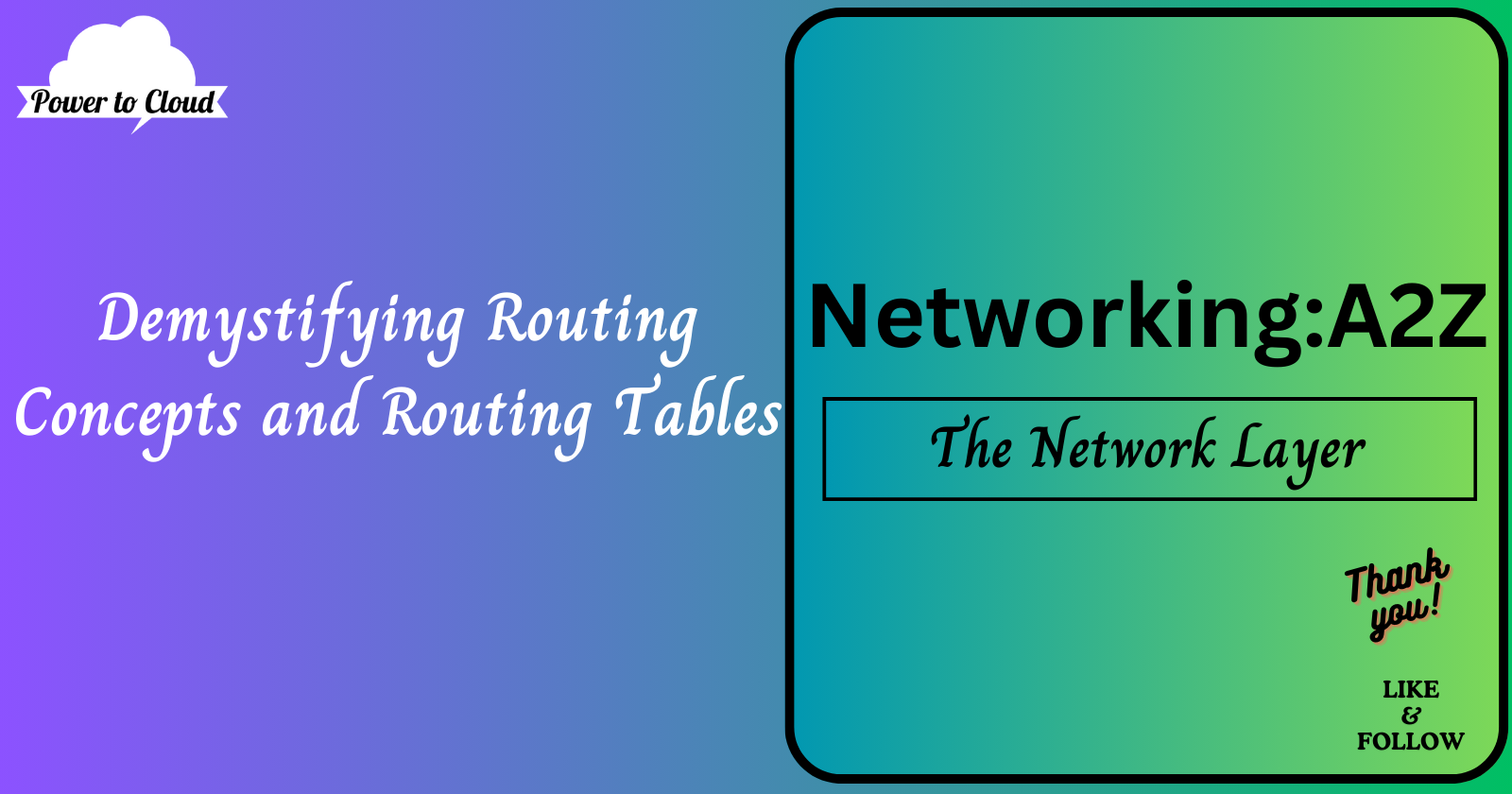
Introduction:
In the intricate ecosystem of networking, routing serves as the cornerstone, facilitating the seamless flow of data across interconnected networks. Let's embark on a journey to unravel the fundamentals of routing, exploring its basic concepts and the indispensable role of routing tables in steering data along the most efficient paths.
Understanding Routing Basics
Introduction to Routing
The internet, a sprawling network connecting millions of individual networks worldwide, relies on routing to enable fast and efficient communication. At its core, routing is both simple and complex, encompassing the mechanisms by which data is forwarded from its source to its destination.
The Role of Routers
Routers, the workhorses of the networking world, play a pivotal role in routing data across networks. These intelligent devices examine the destination IP address of incoming data packets and use their routing tables to determine the optimal path for forwarding the packets to their intended destinations.
Basic Routing Steps
Packet Reception: A router receives a packet of data on one of its interfaces.
Destination Examination: The router inspects the destination IP address of the packet.
Routing Table Lookup: Consulting its routing table, the router identifies the destination network associated with the IP address.
Forwarding Decision: Based on the information in the routing table, the router forwards the packet through the interface closest to the destination network.
Iterative Process: These steps are repeated for each packet, ensuring the efficient routing of data across networks.
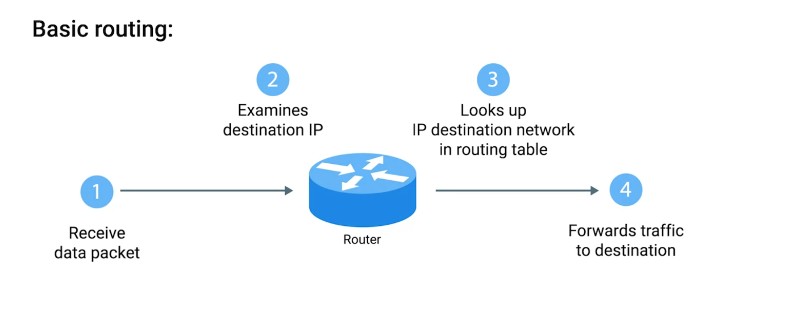
Exploring Routing Through Examples
Simple Routing Example
A router is connected to two networks, A and B.
Network A has an address space of 192.168.1.0/24, and Network B has 10.0.0.0/24.
The router has an interface on each network.
A computer on Network A sends a packet to an address on Network B.
The router receives the packet, uses its routing table to send it to the correct network, and forms a new packet to forward to Network B.
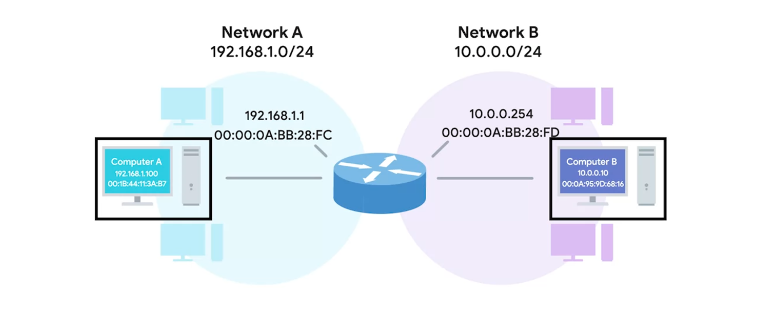
Steps to follow to find the right path
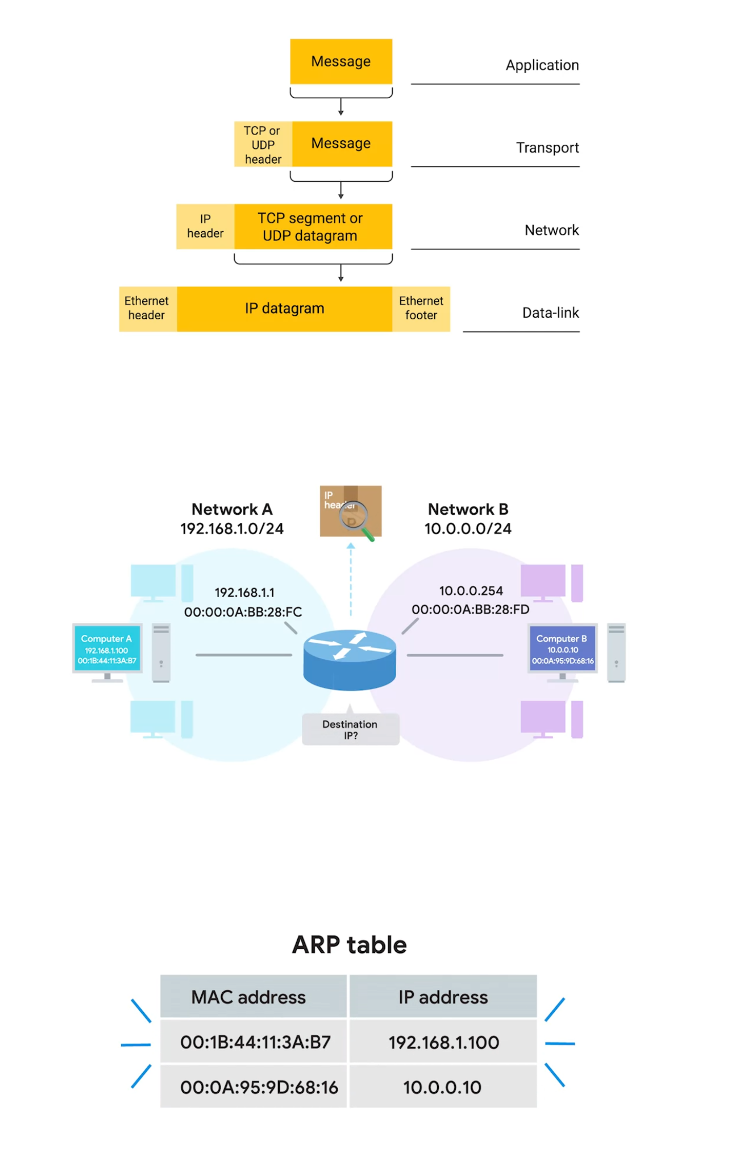
Handling Complexity with Multiple Networks
A third network, C, is introduced with an address space of 172.16.1.0/23.
A second router connects Network B and Network C.
A computer on Network A wants to send data to a computer on Network C.
The router inspects the packet, uses its routing table and sends it along to the second router, which forwards the packet to its final destination.
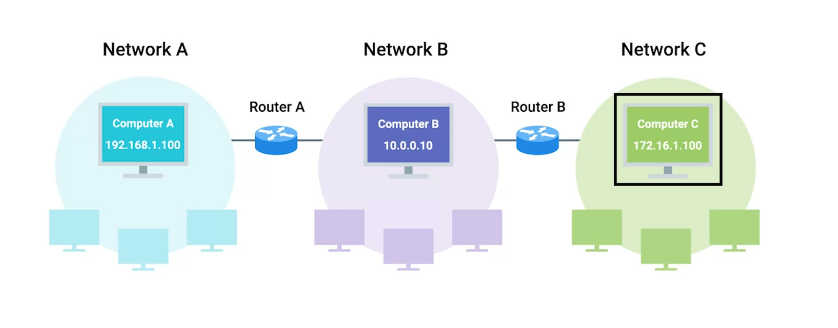
Deciphering Routing Tables
Core Elements of Routing Tables
Routing tables, the navigational maps guiding routers through the network landscape, comprise essential elements to facilitate accurate routing decisions:
Destination Network: Rows representing each network known to the router.
Next Hop: The IP address of the next router to receive data for the destination network.
Total Hops: Tracking the distance to the destination network.
Interface: Identifying the interface through which data should be forwarded.
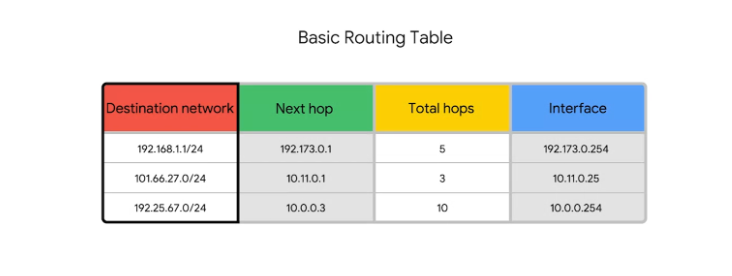
Modern Routing Paradigms
From the earliest routers, consisting of regular computers with two network interfaces and manually updated routing tables, to the sophisticated routing infrastructure of today, routing tables remain integral to the operation of routers across all major operating systems.
Internet-Scale Routing Challenges
Core Internet routers, tasked with handling massive volumes of traffic, grapple with routing tables comprising millions of entries. Despite the complexity, routers meticulously consult their routing tables for every packet, ensuring efficient data transmission across the global network.
In conclusion, routing, coupled with the invaluable guidance of routing tables, underpins the seamless operation of networks, enabling the swift and efficient exchange of data across vast distances. By demystifying the basic concepts of routing and the intricacies of routing tables, we gain a deeper appreciation for the intricate web of connectivity that powers the modern digital world.
Subscribe to my newsletter
Read articles from Vijay Kumar Singh directly inside your inbox. Subscribe to the newsletter, and don't miss out.
Written by

Vijay Kumar Singh
Vijay Kumar Singh
I'm Vijay Kumar Singh, a Linux, DevOps, Cloud enthusiast learner and contributor in shell scripting, Python, networking, Kubernetes, Terraform, Ansible, Jenkins, and cloud (Azure, GCP, AWS) and basics of IT world. 💻✨ Constantly exploring innovative IT technologies, sharing insights, and learning from the incredible Hashnode community. 🌟 On a mission to build robust solutions and make a positive impact in the tech world. 🚀 Let's connect and grow together! #PowerToCloud